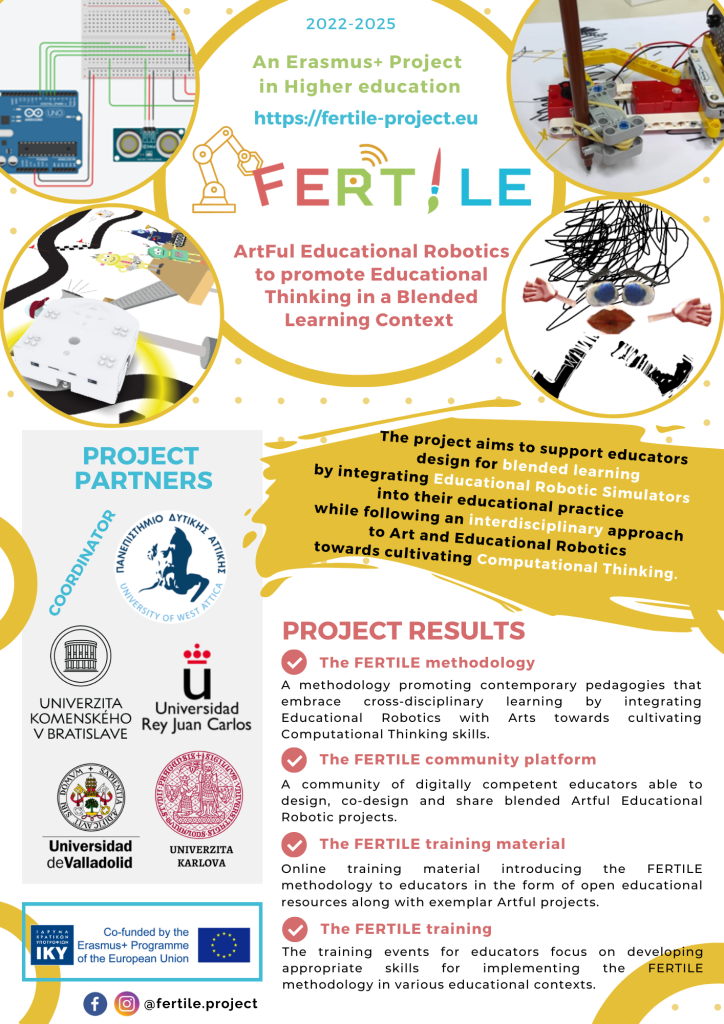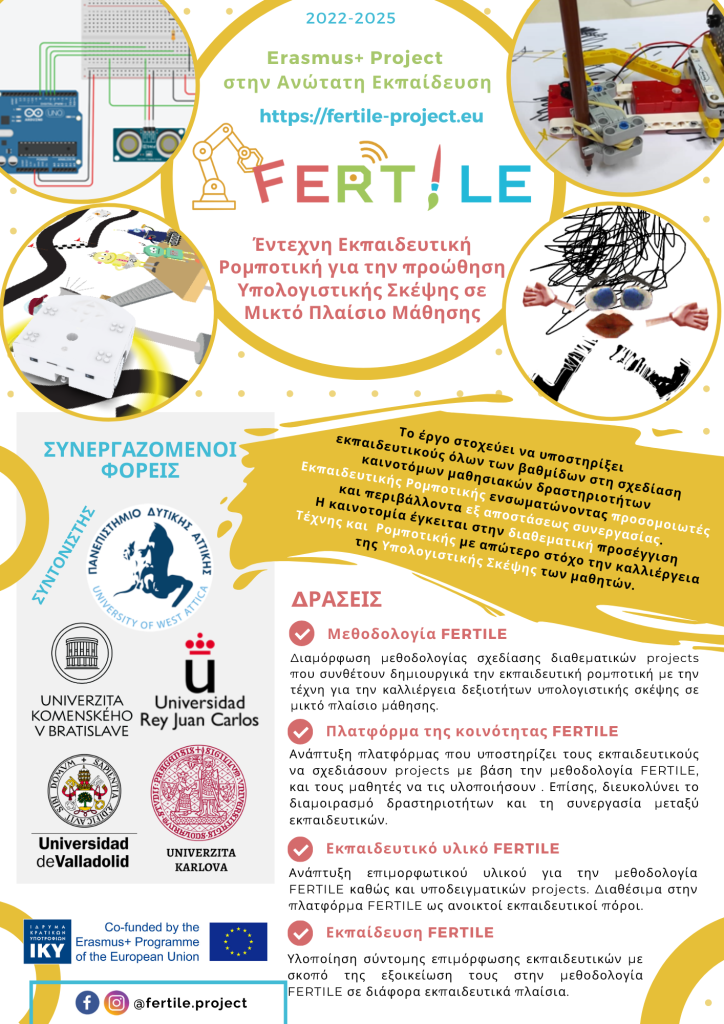The "FERTILE" project
Artful Educational Robotics to promote Computational Thinking in a Blended Learning context



Project Promo Videos (in English, Spanish, Slovak and Greek)
Project Summary
The integration of Educational Robotics (ER) in the educational practice is associated with the development of digital skills and Computational Thinking (CT), positively affecting students’ personal development. As ER has been deeply connected with classroom-based learning and face-to-face (f2f) interaction, the Covid-19 pandemic imposing online learning has abruptly discontinued robotics’ implementation in all educational levels from elementary to secondary education and universities. Although several initiatives on developing ER simulators appeared, which have recently been also released as a cost-effective solution in case robotic technologies are not available, their exploitation remains sparse.
Moreover, no methodologies exist to support educators in designing and implementing blended or online robotics learning designs. So, in the post-pandemic era, it seems to open up opportunities for a digital transformation, exploring the potential of integrating ER in a meaningful blended learning context.
Project Objectives
The FERTILE project aimed to support educators in designing for blended learning by integrating ER simulators and remote collaboration into the educational practice. It intended to stimulate innovative learning and teaching practices by promoting contemporary pedagogies that embrace cross-disciplinary learning by integrating ER with Arts towards cultivating Computational Thinking (CT) skills in a blended learning context. To this end, the main innovation of this approach lies in the way Arts are involved as a discipline with a great deal of CT e.g. creating art involves problem solving, representation of expression patterns (i.e. Chekhov pauses, storytelling techniques, animated characters), algorithm development (i.e. directing a choreography), grasp the main idea of a literary text (summary or interpretation).
Robotics, physical or online, can be considered as a functional part of such processes; students create robots to represent behaviors, scenes, motifs of poems, or to describe a story in creative and out-of-the-box ways.
The explicit target group of the project was educators following a mixed-status approach involving academic tutors, pre-service teachers and in-service teachers. To address the needs of educators teaching or using ER in elementary, secondary or higher education, the FERTILE project:
- Designed, implemented and evaluated the “FERTILE” methodology. A methodology for designing blended learning contexts that holistically cultivate CT skills by integrating f2f Artful ER activities focusing on artefacts construction with online activities. On line activities were implemented through a community platform enabling remote collaboration for planning, reflection on the artefacts, programming and co-design through ER simulators.
- Organised and implemented training events for educators focusing on developing appropriate skills for implementing the FERTILE methodology in various educational contexts.
- Established a community of digitally competent educators able to design, co-design and share blended Artful ER projects through a community platform.
- Provided open educational resources such as online training material for educators and made exemplar projects available after the project’s completion.
The "FERTILE" Consortium
FERTILE exploits the developed synergies and complementary profiles in Educational Robotics (including real robots & state-of-the-art simulators), Arts and Teacher training, among its consortium members that include researchers from 5 distinguished European Higher Education Institutions:
- University of West Attica, Greece
- Comenius University, Slovakia
- Charles University, Czech Republic
- Universidad de Valladolid and
- Universidad Rey Juan Carlos, Spain
